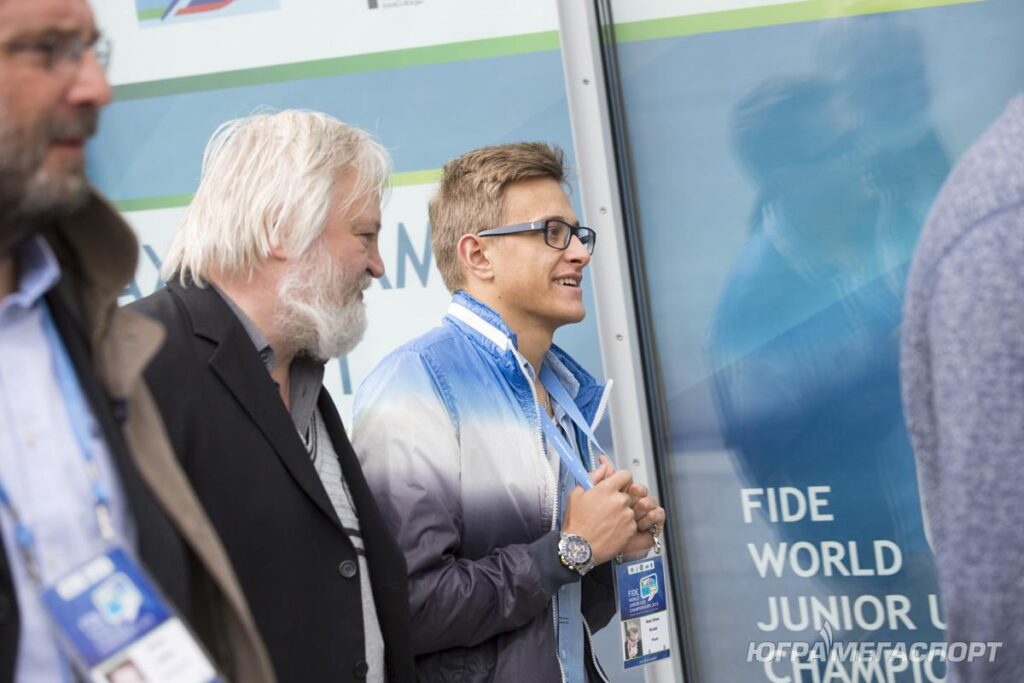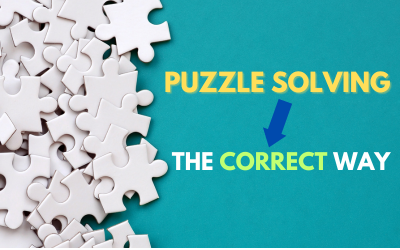I often get emails from blog readers who seemingly solve most Chess puzzles correctly but can’t find the right moves during the game.
What is their problem?
Mostly their definition of ‘correct solution’ differs widely from mine.
They either solve Chess puzzles in a way they can’t during a game (try & error), or they are happy finding the first right move and don’t go deeper.
In this article, you will learn why these approaches are so hurtful for your chess progress & how a correct Chess puzzle solution should look.
In the Spotlight: A Chess Puzzle for You
To make a point, let’s look at the following position. If you want to test yourself, take some time to solve the position. Read on once you come up with an answer. (White to move)

The correct answer is 1.Rxf6 Rxf6 2.Rf1 Raf8 3.Qg5 Kg7 4.Nh5+
Other sub-variations work, such as playing 2.Qg5 then 3.Rf1 or playing 4.Bxf6+ first before playing 5.Nh5+.
The key is to finish the calculation once the piece is regained by force.
Any solution not written down until the end is not correct. This might seem nitpicking, but it is actually extremely important.
During a game, you don’t have the benefit of knowing there is a win. You have to calculate clearly and can’t just play the move that looks most tempting. It might very well be that a tempting move loses because of a trick at the end of the line.
To prepare for the in-game moment, we need to calculate correctly and, until the end, also in training.
So if you just thought, “Ah, 1.Rxf6 Rxf6 2.Rf1 wins”, you have some work to do.
Your intuition is right, but sooner than later, there will be an in-game position where your intuition leads you on the wrong path. This is where your crystal clear calculation should come in and save your ass.
Now let’s look at the two most common ways to do it wrong, and you’ll learn how to do it better next time.
Falling into the Trap: The Try & Error Method
This is a phenomenon mostly happening when studying with online tactics trainers. You see a tempting move and execute it. If it is correct, you will do the same on the second move. If it is wrong, you have another shot at the same puzzle and go with the next most likely move.
Eventually, you will “solve” (I’d rather say guess) the puzzle. You might try Bxf6, Rxf6, or Qg5 in any order in the example above. Even if you get 1.Rxf6 right from the get-go, you shouldn’t really be proud. You probably didn’t see until the end of the line, so you didn’t improve any skills that help you in real games.
This is also the reason why I’m not a big fan of speed puzzle solving like Puzzle Rush or Puzzle Racer. The limited time forces you into a try & error mindset, which will be useless during a real game.
The only real solution here is:
Never solve by the try & error method.
It is a horrible habit that increases your confidence (“I got it right”) but worsens your chess. This inevitably leads to way too high expectations and, thus, to disappointment and frustration.
Just remember Try & Error —> Frustration, and you should be able to withstand the temptation.
A Common Mistake: Shallow Thinking and Its Consequences
Shallow thinking is the next biggest issue and is a close friend of the try & error method. Both stem from the same human tendency to be lazy.
It is hard to calculate a line until the end, but sometimes glaringly obvious which first move one should play. So you think, “I’ll just play this move and think from the next position.”
The problem here is a practical one again. Sometimes, the obvious moves are wrong!
When solving tactical exercises, you know there is something good in the position. If there is only one forceful-looking move, you might be tempted to go with it without thinking.
But during the game, this isn’t true at all. There are positions where a move looks good but loses instantly.
That’s why it is important that you only execute a move during training when you finish your full calculation process. This habit will eventually save you a lot of points during your games.
Wisdom from Artur Jussupow
Artur Jussupow, the former World #3 and my Coach in my teenage years, had some great advice when I used the shallow thinking method in training.
A common conversation would go like that:
Artur: “Solve this position, White to move, you get 5 Minutes
Noël (after 30 seconds): “I believe f5 looks good.”
Artur: “You can believe in the church; in chess, we calculate and know.”

He would then not say anything until I came up with the full line I calculated until the very end.
Since then, whenever I thought, “This move looks good,” I was reminded of Artur telling me to finish my calculation before making assumptions.
The Road to Success: How to Solve Chess Puzzles Correctly
Now that you know what to avoid solving a puzzle correctly is pretty straightforward. Open up your puzzle book or go to your favorite Online Chess Tactics Trainer.
Now follow these three simple steps:
1) Carefully examine the position before jumping into one move that looks or feels right (sometimes my students miss that they are material up or down because they immediately try to spot the right move).
2) Come up with a List of Candidate moves. The simplest way to get the most forcing ones it to look for:
- Checks
- Captures
- Threats
in this sequence.
3) Calculate one move at a time. Start with the most forceful one (if there is a checkmate, you don’t need to calculate other moves!) and finish only with a clear evaluation. If you win by force, shortly make sure you didn’t miss anything, then write down the solution and compare it with the puzzle solution.
If the evaluation isn’t good (enough), continue with the next most forceful move. If none of the initial candidate moves ends in a good (enough) evaluation, you either need to find more candidate moves or decide on the line with the least bad evaluation.
You are now curating a habit that will help you during your exercises but even more in-game. The right, non-rushed thought process helped me and my students save dozens of points. It will do the same for you.
